Test your knowledge of long term care.
1. Family caregivers provide what percentage of long term care?
a) 20%
b) 30%
c) 50%
d) More than 80%
2. In 2006, on average, one year of care for a semi-private room in a nursing home costs:
a) $28,000
b) $38,000
c) $42,000
d) $62,000
3. The government will pay for my aging parent’s health care when they become incapacitated. They will even pay me to care for my loved one.
a) True
b) False
4. Hospice is a place you send the terminally ill to die.
a) True
b) False
5. The average caregiver is:
a) Born before 1940, cares for her husband, is wealthy
b) Born before 1960, lives 6 hours away, and is highly trained at skilled nursing care include changing diapers and lifting seniors
c) Born in 1960, married, female, works full or part time, has older children at home, spends 20 or more hours a week caregiving for at least 4 years.
6. What percent of those receiving formal or informal care are residing at home?
a) Less than 10%
b) 25%
c) 50%
d) More than 85%
7. Employed caregivers miss an average of how much time per month away from work
a) 30 minutes
b) 4 hours
c) 1 day
d) 2 days
8. Once you designate a power of attorney, you cannot change your mind
a) True
b) False
9. Guardianship is the best solution for all caregivers of aging loved ones
a) True
b) False
10. Alzheimer’s disease is easily diagnosed with a simple test because the cause is clearly known.
a) True
b) False
11. The average nursing home patient is:
a) 85 or older and has Alzheimer’s
b) A stroke victim who has no family
c) A widowed man who had an accident
12. Most people aged 65 and older have long term care insurance?
a) True
b) False
13. Most older Americans discuss end-of-life wishes and have planned their estates.
a) True
b) False
14. A reverse mortgage is beneficial for all seniors.
a) True
b) False
15. Average life expectancy has increased by about ____ years to ____ years since the Social Security program was implemented in the 1930s
a) 15 to 78
b) 25 to 65
c) 20 to 85
d) 12 to 75
16. Those 65+, although they represent 12% of the total population, they account for ____% of total national healthcare expenditures, ____% of hospital stays (admissions), and nearly ____% of all days in the hospital!
17. Only cancer patients may receive hospice care.
a) True
b) False
18. The average 4-hour home healthcare visit costs:
a) $40
b) $52
c) $60
d) $76
19. What is the most requested form of help by caregivers:
a) FMLA time
b) Adult Day Care
c) Free funeral planning
d) Respite Care
e) Meals on Wheels
20. Since 1993, the Family and Medical Leave Act (FMLA), (a federal law) offers eligible workers up to ________ a year of unpaid leave for family caregiving without loss of job security or health benefits.
a) 12 weeks
b) 4 weeks
c) 2 weeks
d) 5 days
21. Injuries from falls are the 6th leading cause of death among the elderly.
How often do those aged 65+ fall each year?
a) 1 in 20
b) 1 in 10
c) 1 in 5
d) 1 in 3
answers in previous post dated September 6
Saturday, September 15, 2007
Thursday, September 6, 2007
Test Your Knowledge of Long Term Care.
Test your knowledge of long term care.
Take the test first. See posting dated September 15.
Answers
1. Family caregivers provide what percentage of long term care?
a) 20%
b) 30%
c) 50%
d) More than 80%
2. In 2006, on average, one year of care for a semi-private room in a nursing home costs:
a) $28,000
b) $38.000
c) $42,000
d) $62,000
3. The government will pay for my aging parent’s health care when they become incapacitated. They will even pay me to care for my loved one.
a) True
b) False
Most elders and their families assume the government funds long term care. As a result, very few plan for long-term care.
Government programs such as Medicare, Medicaid, and Veteran’s Administration cover long term care costs only under specific and limited number of conditions.
Medicaid covers long term care costs for those who qualify meaning their assets and income are below $2000.
Medicare only covers short term treatment of acute illness or accidents. A physician must prescribe these medical services. In many cases, treatment lasts only thirty days.
Most long term care is provided free of charge by family members.
4. Hospice is a place you send the terminally ill to die.
a) True
b) False
Hospice care is a service that provides comfort care for any person who has a life-threatening or terminal illness. Most hospice patients are cared for in their own home or the home of a loved one. Hospice care is a family-centered approach that includes a team of doctors, nurses, social workers, counselors, clergy persons, and trained volunteers. They work together focusing on the dying patient’s needs-- physical, psychological, or spiritual. The goal of hospice is to help keep the patient as pain-free as possible, with loved ones nearby until death. All hospices consider the patient and family together as the unit of care and they even provide help with bereavement.
Medicare and Medicaid cover virtually all hospice costs including medication, respite care, equipment ) oxygen tanks, hospital beds) once the patient qualifies.
Importantly, hospice staff is on-call 24 hours a day, seven days a week.
5. The average caregiver is:
a) Born before 1940, cares for her husband, is wealthy
b) Born before 1960, lives 6 hours away, and is highly trained at skilled nursing care include changing diapers and lifting seniors
c) Born in 1960, married, female, works full or part time, has older children at home, spends 20 or more hours a week caregiving for at least 4 years.
6. What percent of those receiving formal or informal care are residing at home?
a) Less than 10%
b) 25%
c) 50%
d) More than 85%
7. Employed caregivers miss an average of how much time per month away from work
a) 30 minutes
b) 4 hours
c) 1 day
d) 2 days
8. Once you designate a power of attorney, you cannot change your mind
a) True
b) False
9. Guardianship is the best solution for all caregivers of aging loved ones
a) True
b) False
Guardianship, a complicated and time-consuming process, should be a solution of last resort.
10. Alzheimer’s disease is easily diagnosed with a simple test because the cause is clearly known.
a) True
b) False
Scientists do not yet fully understand what causes Alzheimer's disease. Age is the leading risk factor followed by family history.
At specialized centers, doctors can diagnose "possible" or "probable" Alzheimer's disease correctly up to 90 percent of the time. Doctors use several tools to diagnose "probable" Alzheimer's disease. These tools include a complete medical history and tests that measure memory, problem solving, attention, counting, and language abilities. Medical tests such as analysis of blood, urine, or spinal fluid are used to determine if the dementia has another cause.
11. The average nursing home patient is:
a) 85 or older and has Alzheimer’s
b) A stroke victim who has no family
c) A widowed man who had an accident
12. Most people aged 65 and older have long term care insurance?
a) True
b) False
Less than 10% of those 65 and older have Long Term Care Insurance. This product did not appear on the market until the 1980s.
By 2005, roughly 7 million LTCI policies were in force in the United States. Most policies sold today (90 percent) cover services received in a range of settings, including institutions and at home. Typically, policies reimburse the insured for long-term care expenses up to a fixed amount, such as $100 or $150 per day.
To receive benefits, the insured must meet the policy's disability criteria. Nearly all policies define disability as either severe cognitive impairment or the need for help in performing at least two “activities of daily living” such as bathing and dressing.
In 2005, the typical purchaser was age 61 and had fairly substantial income and assets. Nearly half (49 percent) of purchasers had incomes over $75,000 per year and more than three-fourths (76 percent) had over $100,000 in liquid assets. By comparison, only 30 percent of the general population age 50 and older had liquid assets in excess of $100,000.
13.Most older Americans discuss end-of-life wishes and have planned their estates.
a) True
b) False
Lack of planning for long term care causes major problems for families concerning eldercare housing, medical, end-of-life, money matters and day-to-day care
14. A reverse mortgage is beneficial for all seniors.
a) True
b) False
A "reverse" mortgage is a loan against the home that does not have to pay back for as long as the owner lives there. With a reverse mortgage, you can turn the value of your home into cash without having to move or to repay the loan each month. Eligibility requires the home owner to be at least 62 years of age and to have majority equity. Once the owner dies, the bank takes possession of the home.
Although there are significant advantages for some elders, not everyone will benefit from this financial management tool.
15. Average life expectancy has increased by about ____ years to ____ years since the Social Security program was implemented in the 1930s
a) 15 to 78
b) 25 to 65
c) 20 to 85
d) 12 to 75
16. Those 65+, although they represent 12% of the total population, they account for ____% of total national healthcare expenditures, ____% of hospital stays (admissions), and nearly ____% of all days in the hospital!
Although they represent 12% of the total population, they account for 36% of total national healthcare expenditures, 36% of hospital stays (admissions), and nearly 50% of all days in the hospital!
The population over age 65 are very disproportionate users of healthcare.
17. Only cancer patients may receive hospice care.
a) True
b) False
Patients with both cancer and non-cancer illnesses are eligible to receive hospice care. The determining factor is if the patient is diagnosed terminally ill with 6-months or less time to live.
18. The average 4-hour home healthcare visit costs:
a) $40
b) $52
c) $60
d) $76
The national average cost of a home health aide is $18 per hour.
19. What is the most requested form of help by caregivers:
a) FMLA time
b) Adult Day Care
c) Free funeral planning
d) Respite Care
e) Meals on Wheels
Respite care is when someone comes and gives the regular caregiver some "time off" from their duties. Many local government and community agencies provide this help free of charge.
20. Since 1993, the Family and Medical Leave Act (FMLA), (a federal law) offers eligible workers up to ________ a year of unpaid leave for family caregiving without loss of job security or health benefits.
a) 12 weeks
b) 4 weeks
c) 2 weeks
d) 5 days
21. Injuries from falls are the 6th leading cause of death among the elderly.
How often do those aged 65+ fall each year?
a) 1 in 20
b) 1 in 10
c) 1 in 5
d) 1 in 3
How did you do????
Take the test first. See posting dated September 15.
Answers
1. Family caregivers provide what percentage of long term care?
a) 20%
b) 30%
c) 50%
d) More than 80%
2. In 2006, on average, one year of care for a semi-private room in a nursing home costs:
a) $28,000
b) $38.000
c) $42,000
d) $62,000
3. The government will pay for my aging parent’s health care when they become incapacitated. They will even pay me to care for my loved one.
a) True
b) False
Most elders and their families assume the government funds long term care. As a result, very few plan for long-term care.
Government programs such as Medicare, Medicaid, and Veteran’s Administration cover long term care costs only under specific and limited number of conditions.
Medicaid covers long term care costs for those who qualify meaning their assets and income are below $2000.
Medicare only covers short term treatment of acute illness or accidents. A physician must prescribe these medical services. In many cases, treatment lasts only thirty days.
Most long term care is provided free of charge by family members.
4. Hospice is a place you send the terminally ill to die.
a) True
b) False
Hospice care is a service that provides comfort care for any person who has a life-threatening or terminal illness. Most hospice patients are cared for in their own home or the home of a loved one. Hospice care is a family-centered approach that includes a team of doctors, nurses, social workers, counselors, clergy persons, and trained volunteers. They work together focusing on the dying patient’s needs-- physical, psychological, or spiritual. The goal of hospice is to help keep the patient as pain-free as possible, with loved ones nearby until death. All hospices consider the patient and family together as the unit of care and they even provide help with bereavement.
Medicare and Medicaid cover virtually all hospice costs including medication, respite care, equipment ) oxygen tanks, hospital beds) once the patient qualifies.
Importantly, hospice staff is on-call 24 hours a day, seven days a week.
5. The average caregiver is:
a) Born before 1940, cares for her husband, is wealthy
b) Born before 1960, lives 6 hours away, and is highly trained at skilled nursing care include changing diapers and lifting seniors
c) Born in 1960, married, female, works full or part time, has older children at home, spends 20 or more hours a week caregiving for at least 4 years.
6. What percent of those receiving formal or informal care are residing at home?
a) Less than 10%
b) 25%
c) 50%
d) More than 85%
7. Employed caregivers miss an average of how much time per month away from work
a) 30 minutes
b) 4 hours
c) 1 day
d) 2 days
8. Once you designate a power of attorney, you cannot change your mind
a) True
b) False
9. Guardianship is the best solution for all caregivers of aging loved ones
a) True
b) False
Guardianship, a complicated and time-consuming process, should be a solution of last resort.
10. Alzheimer’s disease is easily diagnosed with a simple test because the cause is clearly known.
a) True
b) False
Scientists do not yet fully understand what causes Alzheimer's disease. Age is the leading risk factor followed by family history.
At specialized centers, doctors can diagnose "possible" or "probable" Alzheimer's disease correctly up to 90 percent of the time. Doctors use several tools to diagnose "probable" Alzheimer's disease. These tools include a complete medical history and tests that measure memory, problem solving, attention, counting, and language abilities. Medical tests such as analysis of blood, urine, or spinal fluid are used to determine if the dementia has another cause.
11. The average nursing home patient is:
a) 85 or older and has Alzheimer’s
b) A stroke victim who has no family
c) A widowed man who had an accident
12. Most people aged 65 and older have long term care insurance?
a) True
b) False
Less than 10% of those 65 and older have Long Term Care Insurance. This product did not appear on the market until the 1980s.
By 2005, roughly 7 million LTCI policies were in force in the United States. Most policies sold today (90 percent) cover services received in a range of settings, including institutions and at home. Typically, policies reimburse the insured for long-term care expenses up to a fixed amount, such as $100 or $150 per day.
To receive benefits, the insured must meet the policy's disability criteria. Nearly all policies define disability as either severe cognitive impairment or the need for help in performing at least two “activities of daily living” such as bathing and dressing.
In 2005, the typical purchaser was age 61 and had fairly substantial income and assets. Nearly half (49 percent) of purchasers had incomes over $75,000 per year and more than three-fourths (76 percent) had over $100,000 in liquid assets. By comparison, only 30 percent of the general population age 50 and older had liquid assets in excess of $100,000.
13.Most older Americans discuss end-of-life wishes and have planned their estates.
a) True
b) False
Lack of planning for long term care causes major problems for families concerning eldercare housing, medical, end-of-life, money matters and day-to-day care
14. A reverse mortgage is beneficial for all seniors.
a) True
b) False
A "reverse" mortgage is a loan against the home that does not have to pay back for as long as the owner lives there. With a reverse mortgage, you can turn the value of your home into cash without having to move or to repay the loan each month. Eligibility requires the home owner to be at least 62 years of age and to have majority equity. Once the owner dies, the bank takes possession of the home.
Although there are significant advantages for some elders, not everyone will benefit from this financial management tool.
15. Average life expectancy has increased by about ____ years to ____ years since the Social Security program was implemented in the 1930s
a) 15 to 78
b) 25 to 65
c) 20 to 85
d) 12 to 75
16. Those 65+, although they represent 12% of the total population, they account for ____% of total national healthcare expenditures, ____% of hospital stays (admissions), and nearly ____% of all days in the hospital!
Although they represent 12% of the total population, they account for 36% of total national healthcare expenditures, 36% of hospital stays (admissions), and nearly 50% of all days in the hospital!
The population over age 65 are very disproportionate users of healthcare.
17. Only cancer patients may receive hospice care.
a) True
b) False
Patients with both cancer and non-cancer illnesses are eligible to receive hospice care. The determining factor is if the patient is diagnosed terminally ill with 6-months or less time to live.
18. The average 4-hour home healthcare visit costs:
a) $40
b) $52
c) $60
d) $76
The national average cost of a home health aide is $18 per hour.
19. What is the most requested form of help by caregivers:
a) FMLA time
b) Adult Day Care
c) Free funeral planning
d) Respite Care
e) Meals on Wheels
Respite care is when someone comes and gives the regular caregiver some "time off" from their duties. Many local government and community agencies provide this help free of charge.
20. Since 1993, the Family and Medical Leave Act (FMLA), (a federal law) offers eligible workers up to ________ a year of unpaid leave for family caregiving without loss of job security or health benefits.
a) 12 weeks
b) 4 weeks
c) 2 weeks
d) 5 days
21. Injuries from falls are the 6th leading cause of death among the elderly.
How often do those aged 65+ fall each year?
a) 1 in 20
b) 1 in 10
c) 1 in 5
d) 1 in 3
How did you do????
Helpful Service: Grocery Ordering From Afar
An old college buddy, Mary Lou, sent me the following helpful tip:
I looked into something for my parents during their most recent 'crisis' and thought maybe you would be interested for your Web page about caring for aging parents.
My folks are homebound when my dad can't drive and this worries them to no end. My mother gets especially obsessed about grocery shopping. Well, in their area (Long Island) I found out that the grocery chain Walbaums will deliver online orders for a small fee. This means that even though my folks don't have a computer, I can order and pay for their groceries from here, even request an approximate delivery time and day, without anyone leaving home. Of course they have yet to use the service, but just knowing that any one of their children could take care of their grocery order remotely seemed to be a big relief to them. You can review the site at http://shopwaldbaums.com/.
I looked into something for my parents during their most recent 'crisis' and thought maybe you would be interested for your Web page about caring for aging parents.
My folks are homebound when my dad can't drive and this worries them to no end. My mother gets especially obsessed about grocery shopping. Well, in their area (Long Island) I found out that the grocery chain Walbaums will deliver online orders for a small fee. This means that even though my folks don't have a computer, I can order and pay for their groceries from here, even request an approximate delivery time and day, without anyone leaving home. Of course they have yet to use the service, but just knowing that any one of their children could take care of their grocery order remotely seemed to be a big relief to them. You can review the site at http://shopwaldbaums.com/.
Subscribe to:
Posts (Atom)
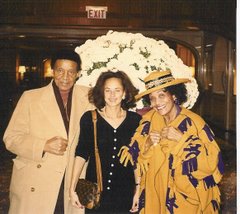
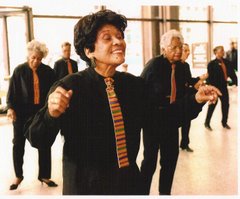
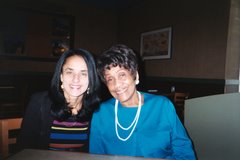
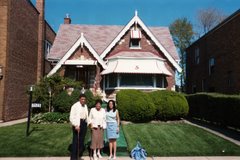
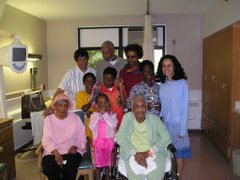

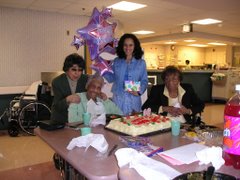
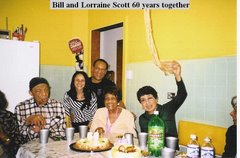
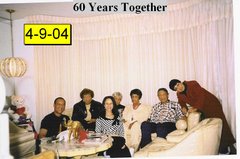
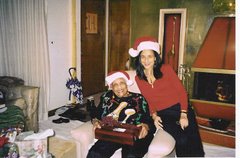
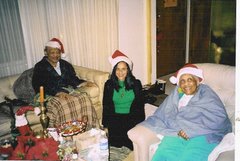
.jpg)